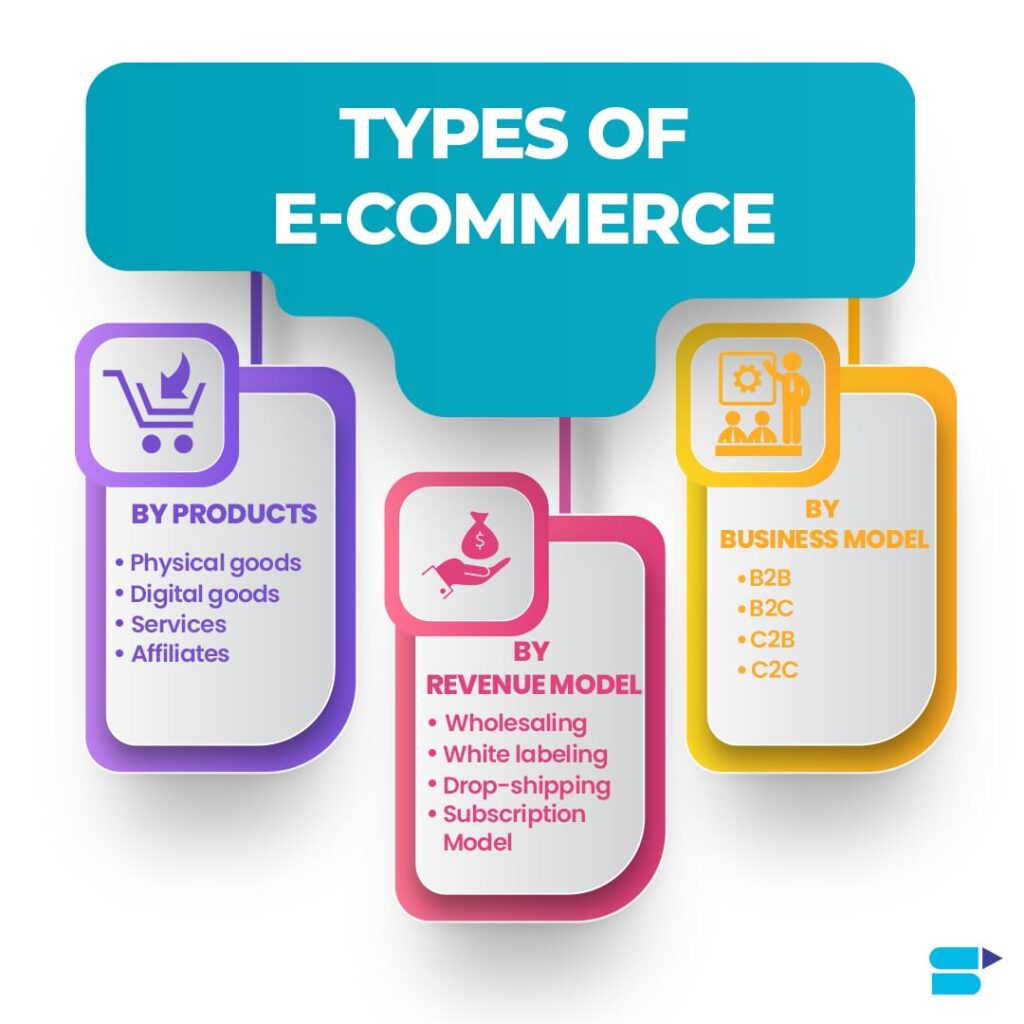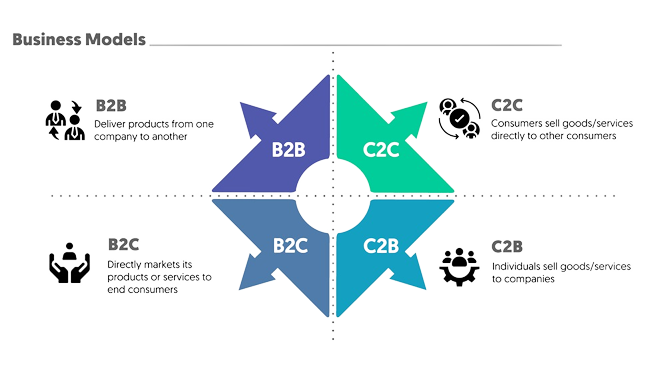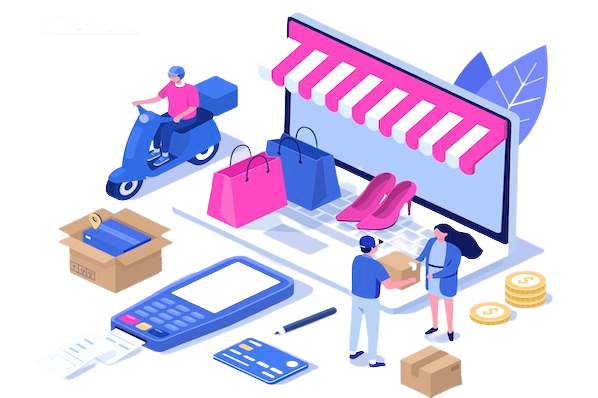E-commerce
The activity of electronically buying or selling of products on online services or over the Internet.
eCommerce refers to any form of business transaction conducted online. The most popular example of eCommerce is online shopping, which is defined as buying and selling of goods via the internet on any device. However, eCommerce can also entail other types of activities, such as online auctions, payment gateways, online ticketing, and internet banking.
Types of E-commerce
BY PRODUCTS
- Physical Goods
- Digital Goods
- Services
- Affiliates
BY REVENUE MODEL
- Wholesaling
- White Labeling
- Drop-Shipping
- Subscription Model
BY BUSINESS MODEL
- B2B
- B2C
- C2B
- C2C

E-commerce Business Models
- B2B (business to business) – This involves companies doing business with each other. One example is manufacturers selling to distributors and wholesalers selling to retailers.
- B2C (business to consumer) – B2C consists of businesses selling to the public through shopping cart software, without needing any human interaction. This is what most people think of when they hear “e-commerce.” An example of this is Amazon.
- C2B (consumer to business) – In C2B e-commerce, consumers post a project with a set budget online, and companies bid on the project. The consumer reviews the bids and selects the company. Elance is an example of this.
- C2C (consumer to consumer) – This takes place within online classified ads, forums or marketplaces where individuals can buy and sell their goods. Examples of this are Craigslist, eBay and Etsy.

Benefits of E-commerce
- Global Market
- Around-the-clock availability
- Reduced costs
- Inventory management
- Targeted marketing
- Serving niche markets
- Working from anywhere

I am open to
New crazy & Weird ideas . .
Creating an online marketing strategy for every new business is increasingly pleasant for me. I am making, learning, developing my digital marketing experience useful to customers’ businesses
